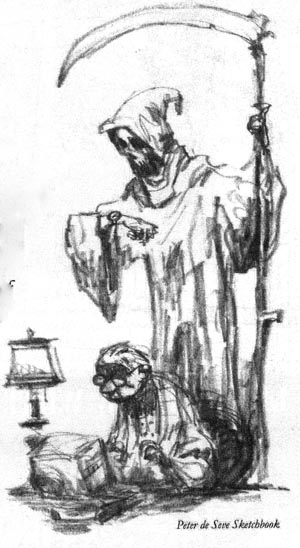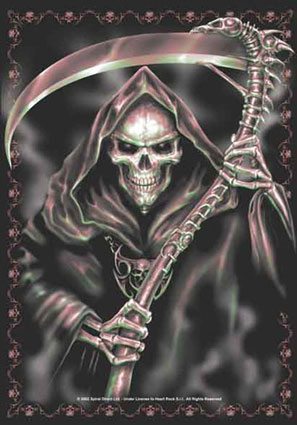|
Renu
Panya
2202242
Introduction to the Study of English Poetry
Acharn
Puckpan Tipayamontri
July
3, 2008
Reading
Response
The Life of Death: Personification in Billy
Collins’s “My Number”
Billy
Collins’s poem “My Number” presents death in action.
Death’s description is suggestive of personification,
where an inanimate thing, an animal, or an abstract idea “is
made human or is given human qualities” (Coursebook
28). He breathes
(l. 3). He reaches
for (l. 2), tampers with (l. 6), scatters (l. 7), and loosens
(l. 8) things. But
how human are these “human qualities”?
How human-like is it to kill a woman who has already lost
her husband, or to snatch away a person who wants to find his
way home, or to give disease for which there is no cure? The token gesture to humanize death is doubly undermined by
the hypotheticality of the questions in which the
personification is couched and by the inhumanity of Death’s
supposedly human actions.
What
human can have a reach that is limitless in space (can be
everywhere from Cincinnati to British Columbia to roller
coasters and dark lanes) and time (is never too busy)?
What person can find every life no matter how hidden?
What person has breath that ends life rather than begins
it?
It seems the speaker’s questions try to humanize
death so he can deal with him as a person who can be persuaded,
who will “find it hard to find” his house (l. 10, 1), and
who has ears and can hear him talk.
The speaker is not brave in talking to death, but afraid.
If personification humanizes death and gives it life,
perhaps taking away personification can end its life?
The personifying imagery makes death more clearly
person-like (having a car, “stepping from a…car” l.11),
bringing him closer and closer in space and the tense shift from
“Is something so?” (first three stanzas) to “I will” (l.
17) to “I start talking” bring death closer and closer in
time. The
hypothetical becomes a definite future, and finally an ongoing
present. At the
end, the actions cease, personification of death stops.
Death is no longer a person who can make arrangements (l.
5) or park a car (l. 12). The
pronoun for death is no longer a “he” but a “this” (l.
17), a definite vagueness that is here.
The sense of doom throughout the poem forebodes the
failure to make death human, and this last word speaks of the
more important failure: after personification, death’s life
continues. |

